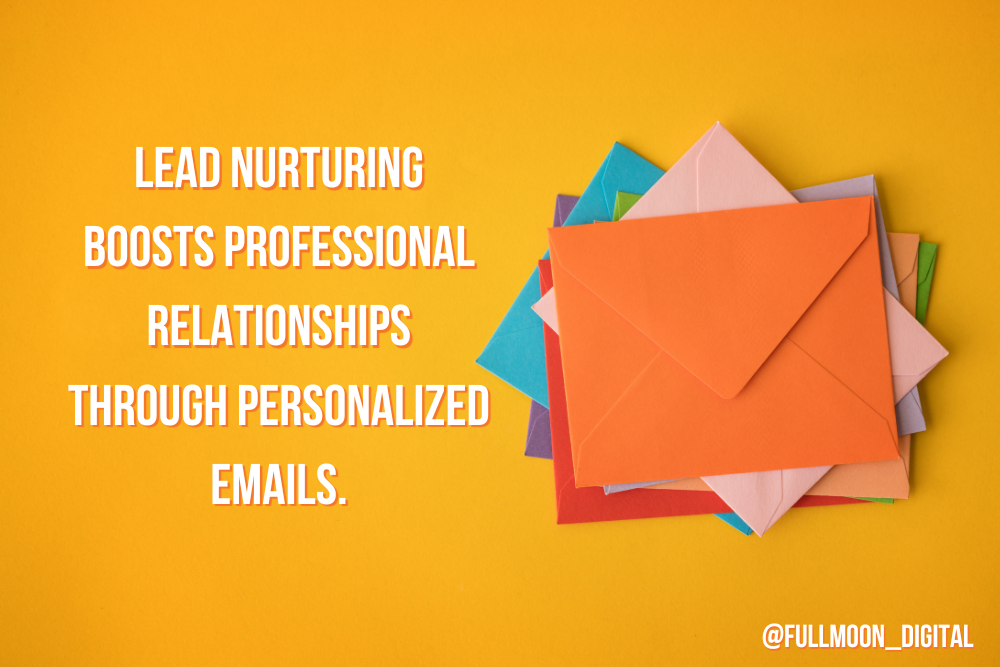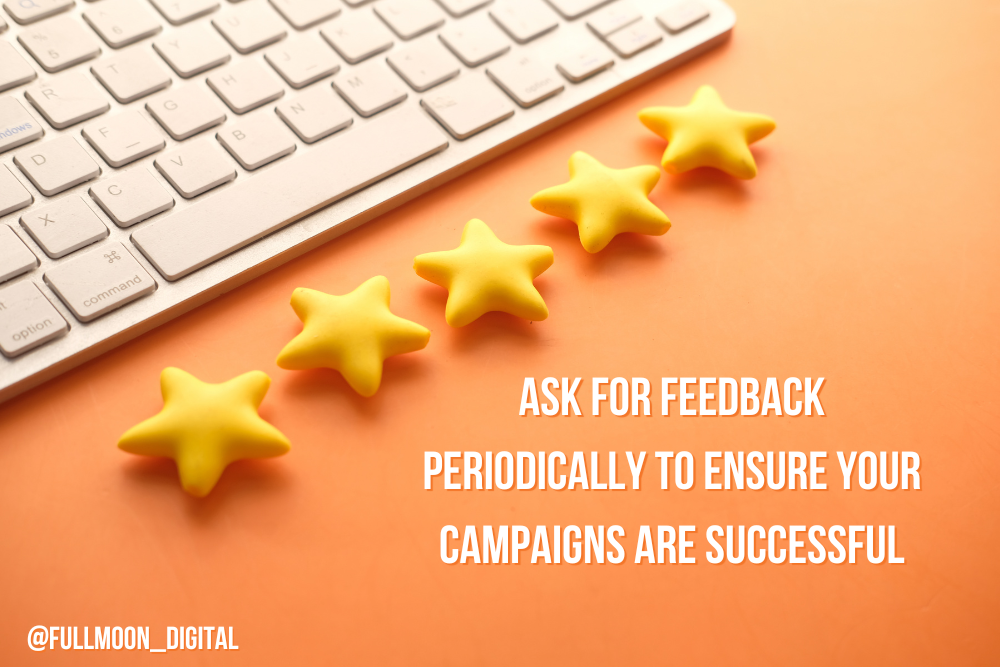These days email marketing campaigns are widely used for lead nurturing. It may sound like an industry buzzword, but rest assured, nurturing leads is a vital part of a successful digital strategy. Everyone wants to generate traffic, build trust with their audience, and convert their leads into new customers. How to achieve this is always the bigger question.
The best way to approach lead nurturing comes with its fair share of hurdles, but our roadmap below on how to create, send, and automate your lead nurturing email campaigns can help you avoid stumbling.
What Is Lead Nurturing?
Lead nurturing involves engaging with the audience to drive maximum conversions. It is the process of building a solid relationship with your customers, including both individuals and other businesses. It aims at ‘nurturing’ potential customers by providing the correct information at the right time.
Lead funnels have to be carefully planned and executed. A lead usually goes through the following steps in the lead funnel.
- A new prospect
- An interested prospect
- A hot opportunity
- A paying customer
You would be surprised to know that the companies excelling at lead nurturing generate 50% more ‘sales ready leads’. Also, 47% larger purchases have been observed from the nurtured leads as compared to the non-nurtured ones. So, ranking this on the list of “importance” ranks very high!
The point is to raise your brand awareness. Henceforth, customers themselves choose your brand over another. During the lead nurturing process, emails prove to be a great tool in the hands of the marketers.
What Are Lead Nurturing Email Campaigns?
The lead nurturing email campaigns tend to impact the user’s buying behavior by sending automated and personalized emails. This includes welcome campaigns, promotional campaigns, educational campaigns, and renewal or re-engagement campaigns. These campaigns use email automation for sending scheduled emails to potential leads.
One can plan and set up a series of lead nurturing emails based on user interaction. Then, every new subscriber will start receiving these emails automatically.
The lead nurturing emails have personalized user-generated content. For example, a discount offer for subscribing may be pretty intriguing to a new lead. Such emails convey the idea that the brand is invested in them. Companies that automate lead management witness a 10% or even more significant increase in revenue in the first 6-9 months itself.
The Benefits of Nurturing Leads With Email Marketing
There are various advantages of nurturing leads with email marketing, some of which are as follows:
- Quick review – The automated software facilitates the tracking and monitoring of leads. Thus, marketers can overview the performance at regular intervals.
- Client relationship management – Sustaining healthy business relations is crucial for any business’s success. Lead nurturing boosts professional relationships through personalized emails.
- Improved results – The automated email campaigns help in the timely delivery of information to the users. It increases click-through rates and conversion rates.
- Effective method – Comparatively, email marketing is a flexible and cost-effective method. Furthermore, it brings a considerable increase in the sales revenue of the firms.
- Multi-dimensional – Brands can target the right audience and even exploit hidden cross-sell and up-sell opportunities.
Overall, it helps in customer relationship management as a whole. Also, you can trigger the buying behavior in the form of CTAs. Designing effective lead nurture campaigns is vital for building trust and inducing the purchases.
How to Send Good Lead Nurturing Email Campaigns
The winning email marketing campaigns indicate the business’ success. Well-nurtured leads create a sense of brand loyalty among customers. Numerous of factors must be kept in mind while sending good lead nurture campaigns, such as:
- Make the prospect/lead the hero of the email – The marketers should study the leads in advance and learn about their personas, including their interests, preferences, goals, etc. The campaigns should be designed keeping the target audience in mind.
- Provide educational content – The idea of any campaign is to take potential leads through different stages of the buying process. For this, provide the content they’re looking for in that stage. For example, if it is a new lead, provide a brief explanation about your product/service and how you can serve them. It’s crucial to provide educational and relevant content to raise brand awareness and develop a well-paying relationship.
- Make appeals to leads – Make your users feel valued and then appeal to the respective CTAs so they couldn’t say ‘NO.’
- Ask for feedback periodically – Feedback ensures that you’re going in the right direction. Also, you can clarify the doubts of the prospects. It will help you know whether the lead is worth nurturing or not. Therefore, follow-up is a must at regular intervals.
- Beautiful and easy email design – The email design leaves a significant impact on the users. It should be beautiful and easily understandable. For example, you can opt for a simple font and consider adding space between two long paragraphs to enhance clarity.
Keep it simple as well as captivating!
Automating Your Lead Nurturing Email Campaigns
Making use of User Journey maps will help us automate these email campaigns. Here, the buyers’ journey goes through three main stages, awareness, consideration, and decision. The brands must follow these closely to achieve the desired results.
First, the need must be created through awareness of the product/service. Then nurture further to make the lead realize the benefits your brand provides in terms of quality of products and services. Lastly, during the decision stage, the brands must show how they’re better than other brands available in the market. All these can be quickly done through automated email marketing campaigns. Two ways of automating your nurture campaigns are:
- Drip campaigns – In Drip campaigns, the automation software sends the lead nurturing emails at set intervals. The software tracks the user’s journey according to the given actions and events such as website visits and clicks on specific links etc. Likewise, it sends scheduled drips or emails.
- Triggered campaigns – Here, the software identifies the triggers based on the interaction with the users. Then, it sends the respective email. In marketing automation, the software automatically sends the email to your customers, clients, and new prospects according to the pre-defined triggers by you. The customer journeys are defined, and emails are set up at once. Then, the same email is sent each time a subscriber reaches a new step.
The automation saves a lot of time and makes customers’ transition from one step to another in the funnel easier. The marketers can improve the quality of emails with automated technology as results help in overviewing the trends and rectifying the mistakes (if any!).
Sending Lead Nurturing Email Campaigns Using AMP Emails
- AMP for emails allow marketers to embed interactive elements such as carousels, accordions, and other such CTA buttons into the emails. The users don’t have to open a new webpage.
- AMP emails are useful for adding forms, scheduling meetings, conducting surveys, etc., inside the emails. It reduces the number of steps and generates quick responses from the recipient’s side.
- The users can register, place orders or provide feedback right inside the email. The email open rates and click-through rates grow significantly. Thus, the interactive AMP emails take the lead nurturing campaigns to another level.
Connect with us today and find out how we can easily help you nurture your leads for a better experience, from the moment they sign up to receive information from your business to the final stage of completing a purchase.




